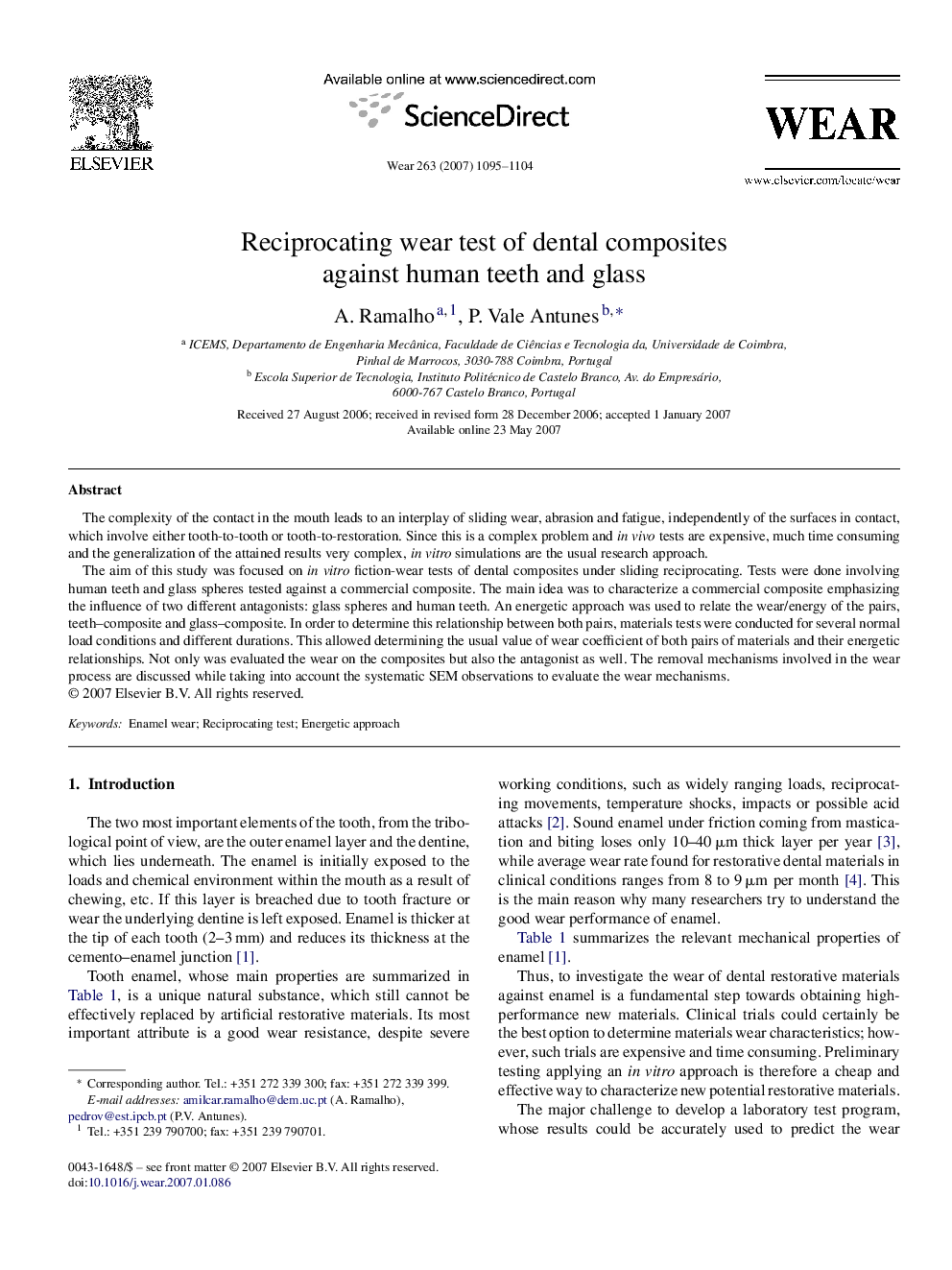| Article ID | Journal | Published Year | Pages | File Type |
|---|---|---|---|---|
| 620002 | Wear | 2007 | 10 Pages |
The complexity of the contact in the mouth leads to an interplay of sliding wear, abrasion and fatigue, independently of the surfaces in contact, which involve either tooth-to-tooth or tooth-to-restoration. Since this is a complex problem and in vivo tests are expensive, much time consuming and the generalization of the attained results very complex, in vitro simulations are the usual research approach.The aim of this study was focused on in vitro fiction-wear tests of dental composites under sliding reciprocating. Tests were done involving human teeth and glass spheres tested against a commercial composite. The main idea was to characterize a commercial composite emphasizing the influence of two different antagonists: glass spheres and human teeth. An energetic approach was used to relate the wear/energy of the pairs, teeth–composite and glass–composite. In order to determine this relationship between both pairs, materials tests were conducted for several normal load conditions and different durations. This allowed determining the usual value of wear coefficient of both pairs of materials and their energetic relationships. Not only was evaluated the wear on the composites but also the antagonist as well. The removal mechanisms involved in the wear process are discussed while taking into account the systematic SEM observations to evaluate the wear mechanisms.
